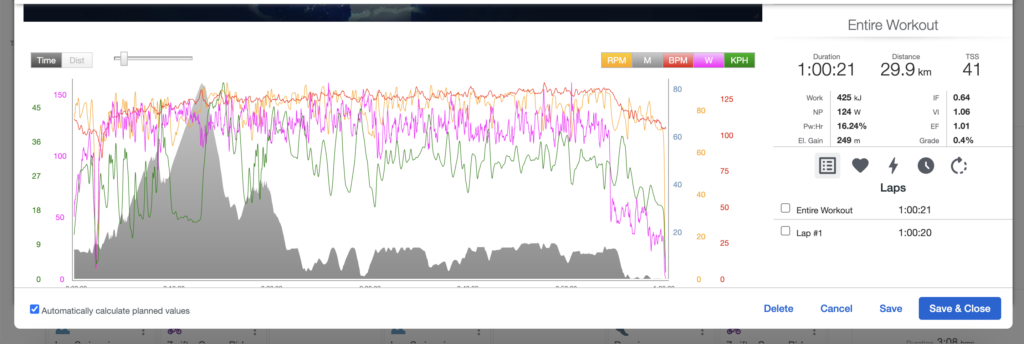
Someone looking for help with their triathlon training will soon find there are two types of triathlon coaches out there. Triathlon coaches who deliver sessions in person alongside those who deliver primarily online, and it can be hard to decide which suits your needs best. In this article I’m going to discus when you would want each, and why I’m moving away from in person coaching.

When most people think of a coach, they imagine someone sat with a clipboard, whistle and probably a moustache barking orders at hapless athletes. This is obviously something of a chariciture, but it is most people’s preconception. A coach is someone you go to see when you to get faster/better. They watch you training, give feedback and help you improve. It’s an old fashioned model, but it works.
The truth is that if you want help with your technical ability, then there is nothing better than someone sat on pool deck watching you swim, maybe using a camera to film your stroke, and giving feedback.
This can take the form of part of a group session, or a one to one session. The going rate for a group swim is around £7 a session, where for one to one you’re looking at closer to £50. A group session gives you a basic set to follow and more camaraderie, but less technical feedback. In fact, unless you specifically request it, you may get no feedback at all. One to one on the other hand is all about you for the duration of the session.
One to one and group swim coaching are two very different products really. Group sessions tend to be attended weekly as part of a group and a long term relationship with a coach, where one to one coached sessions you may only get one of. Which you go for depends on the kind of person you are, and what you’re looking to get from the session. If you want help with your technique, go for one to one. If you want a community and longer term development, then go for group swim sessions.
When it comes to running, cycling and strength it’s similar, but a bit different. One to one running and cycling sessions are pretty rare, but can normally be done on request. Group strength sessions are also very rare, but having a good S+C coach look at your form and provide a mobility screening one to one can be very important to make sure that you’re performing exercises safely and correctly if you are new to the gym.

Online triathlon coaching is often dismissed out of hand, or laughed at by some coaches and athletes, “What do you mean you’re working with an *online* coach?”.
It’s true that online coaching is inferior to in person coaching when it comes to correcting form and giving feedback on technique. I can ask clients to send me videos of them swimming, but it’s never going to be the same as being there in person. However, that’s not what online triathlon coaching is about.
When I deliver a one to one session to an athlete, they have my attention for an hour, then they’re on their own until I see them next, which could be anything from a week to a year later. When working with someone in an online capacity however, I am by their side seven days a week.
Working in an online capacity with someone, I am helping them with every session. I write them a plan which optimises their training around their lifestyle, provide analysis on the data they collect in their session, and answer any questions they have. Rather than focusing on a single session a week, I am building an intricate, carefully planned week of training around them, focused on their specific goals, preferences and weaknesses.
Instead of focusing on pushing them as hard as I can in a single session, I am focused on getting their training balance right across the three disciplines. Making sure we are developing all energy systems, getting the mixture between easy and hard training right, and tweaking it on the fly as fatigue, illness, work, stress and family interfere with our perfect training plan.
When someone begins their coaching education journey, they start by learning to write and deliver face to face sessions. You don’t need much experience to write a simple session such as 10X100M sprints with a warm, simple build set of fast 50s and cool down. This allows clubs to run sessions with a group of volunteers happy to give up an hour of their time once a week to provide sessions and keep the club going.
Most courses aimed at online triathlon coaching require a couple of years of experience before you can start, it’s not the kind of thing you can just launch yourself into with good intentions and buckets of enthusiasm. The reason is that working as an online coach, you are taking on a lot of responsibility. Not only is someone paying you personally for your help, but all of the rest of the money they have invested in their race(s). Someone starting from scratch is probably looking at £5000+ to do a destination Ironman once you consider their entry fee, bike, wetsuit, pool/gym fees, travel, hotels, insurance, clothing e.t.c.
The decision to hire someone to help with their preparations is a savvy one when so much money is already involved. But if you get the programming wrong and they fail to finish their race, that’s not going to go down well with them. The coach on pool deck who told them to keep their elbow higher in the water is much less responsible for your overall performance.
Online coaches also need a much wider knowledge base. If you asked a club coach how what ratio of fructose to glucose they should be consuming on their rides, they may well look back at you blankly, where I as an online coach would be expected to have an answer to what is a relatively basic nutrition question. Online coaches are really a jack of all trades, referring someone out to an in person coach, qualified dietician, psychologist, physiotherapist or other allied health professional were necessary.
When I started coaching, most of what I provided was in person. For the most part I was travelling across London to work for peanuts, often spending more money on travel than I earned in the sessions. But when starting out, all experience is good. I worked as a swimming teacher and in a bike shop to make ends meet during those first few years.
However, now I have worked with hundreds of online clients I have started to walk away from in person sessions for the sake of efficiency.
If I am delivering a swim session to a client I’ll need to get off my laptop, cycle/drive to the session, take into account any preparation time, deliver the session and return home again. By the time all’s said and done, I could well be looking at two hours of my time to deliver a single session. It would be unreasonable to bill a client for two hours to run a one hour session, but the reality is that unless I’m delivering multiple sessions back to back, my impact and income are limited.
As far as coaches go, I’m not in it for the money (as long as I can pay my mortgage at the end of each month), I’m more interested in the impact of my coaching. In those two hours I spent delivering a one to one session I could have written an article like this one to help people like you, put a training plan on sale to sell hundreds of athletes, or spent the time going through dozens of workouts that my athletes have uploaded. Providing feedback, answering their questions and allaying their fears.
My skills as a coach are better suited to long term planning, understanding an athlete’s mindset, nutrition and questioning than they are in working with large groups and analysing someone’s form. I can do a decent job, but I also know there are lots of people out there who do a much better job than me.
Neither is better than the other. However I believe that in person coaching lends itself better to those newer to the sport, and online coaching is better for those who are more confident with their swimming/cycling/running and don’t need the same level of motivation, but rather need guidance with their structure and planning.
If you’re training for five hours a week with friends and mainly there for the social and health benefits, then the in person coaching provided by a club may be just what you need.
If however you are a busy professional, parent and spouse training for an Ironman, then one or two hours a week of supervised interval training isn’t going to prepare you for the rigours of a 17 hour event.
Not many athletes come to me looking for online coaching preparing for their first sprint or Olympic distance event. It happens occasionally, but for the most part people are happy to muddle through training for shorter distances, it’s when we get towards half iron and iron distance events that people feel they need some extra guidance.
The best way to achieve peak performance is to include both in your training. Working with an online coach who can oversee the writing of a plan, answer all your questions and provide ongoing support, while also attending in person coached sessions to have someone check your technique, and/or enjoy the company of training alongside others.